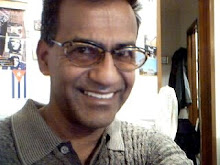

Cambodia's orphan tourism puts some children at risk: experts
SIEM REAP
Thursday, July 28, 2011
PICTURES of hundreds of former volunteers line the walls of a muddy courtyard in Cambodia's tourist hub of Siem Reap, their faces once familiar to the orphans playing there but now long gone.
The colourful gallery at the Acodo orphanage illustrates a growing trend of holidaymakers donating their time and skills to children in the impoverished country — but experts fear they could be doing more harm than good.
Marissa Soroudi, a student in her 20s from New York, is one of the many volunteers teaching English at Acodo, near the famed temples of Angkor and home to more than 60 orphans between the ages of three and 18.
The young American, who pays US$50 a week to work at the orphanage, plans to stay for a few days before travelling on but she knows it is tough on the children to watch volunteers like her come and go.
"There are so many people volunteering that it's kind of like, one leaves and another swoops in," she said.
"They say better not to talk about it with them. Don't say 'I'm leaving in a week', don't do any of that because then they get upset. Better to just not come."
Short-term volunteers may have good intentions, but childcare experts say they are putting some of the most vulnerable children at risk.
"Constant change of caregivers gives emotional loss to children, constant emotional loss to already traumatised children," Jolanda van Westering, a child protection specialist at the United Nations Children's Fund (Unicef) told AFP.
"And the constant exposure to strangers poses risks of harm, of violence and abuse, because we know that oftentimes volunteers come to an orphange without having their backgrounds checked."
As the gateway to the ancient temples of Angkor — which attract more than a million visitors a year — a steady stream of tourists passes through the sleepy riverside town.
And many want to do more than just sightsee in one of the region's poorest nations.
On noticeboards in hotels, cafes and souvenir shops, wide-eyed children stare from posters for schools and orphanages, encouraging travellers to donate time and money for their particular cause.
"Visitors see some poverty and they feel bad about it," said Ashlee Chapman, a project manager with Globalteer, an organisation that matches volunteers with local organisations.
"They want to do something," she adds, saying they might visit a children's project for a few hours, donate money and toys, "take a holiday snap and feel that they've contributed."
As the so-called volunteer tourism sector flourishes, so too does the number of institutions housing children.
In the past six years, the number of orphanages in Cambodia has almost doubled to 269, housing some 12,000 children, according to Unicef.
Friends International, a local organisation that works with marginalised urban children and youths, says tourism has contributed to the increase.
Visiting orphanages has become a tourist "attraction" in big cities like Phnom Penh and Siem Reap, said Marie Courcel, alternative care project manager at Friends International.
That in turn encourages the institutionalisation of youngsters, many of whom are very poor but actually have at least one living parent, she said.
Only one in 10 of the orphanages are funded by the state, the rest rely on charitable contributions to survive.
At Siem Reap's Acodo, huddled with the children in the shade of the only tree, Soroudi organises the afternoon activity.
Following her lead, the orphans make headpieces out of grass and add licks of paint to green and yellow conical hats, costumes they will wear in that evening's traditional Khmer dance show.
The daily half-hour event attracts a tourist crowd who thank the young performers with donations of money.
Van Westering said she worried about the dangers for children who are expected to raise funds for their care by begging or putting on shows for tourists.
"They have to do their best and they hear that also if they don't there isn't enough money for their care," said Van Westering. "You can just imagine what that does to children to live in that kind of insecure environment."
Her advice to tourists pondering a brief working stint at an orphanage is simple: "Don't go. Give blood, support a community-based organisation that provides day activities for a child but where the children go home at night."
Betsy Brittenham, an interior designer in her 50s from Arizona, and her 15-year-old daughter Alex are spending three weeks as volunteer teachers at one such place, the Grace House Community Centre, where the children return to their families each evening.
Like the volunteers at Acodo, Betsy pays for the privilege of working on her holiday but she sees no downsides to the experience. "When you volunteer like this you're bringing your money and you're making tremendous strides and teaching their children. It's something you can't put a price on."AFP



